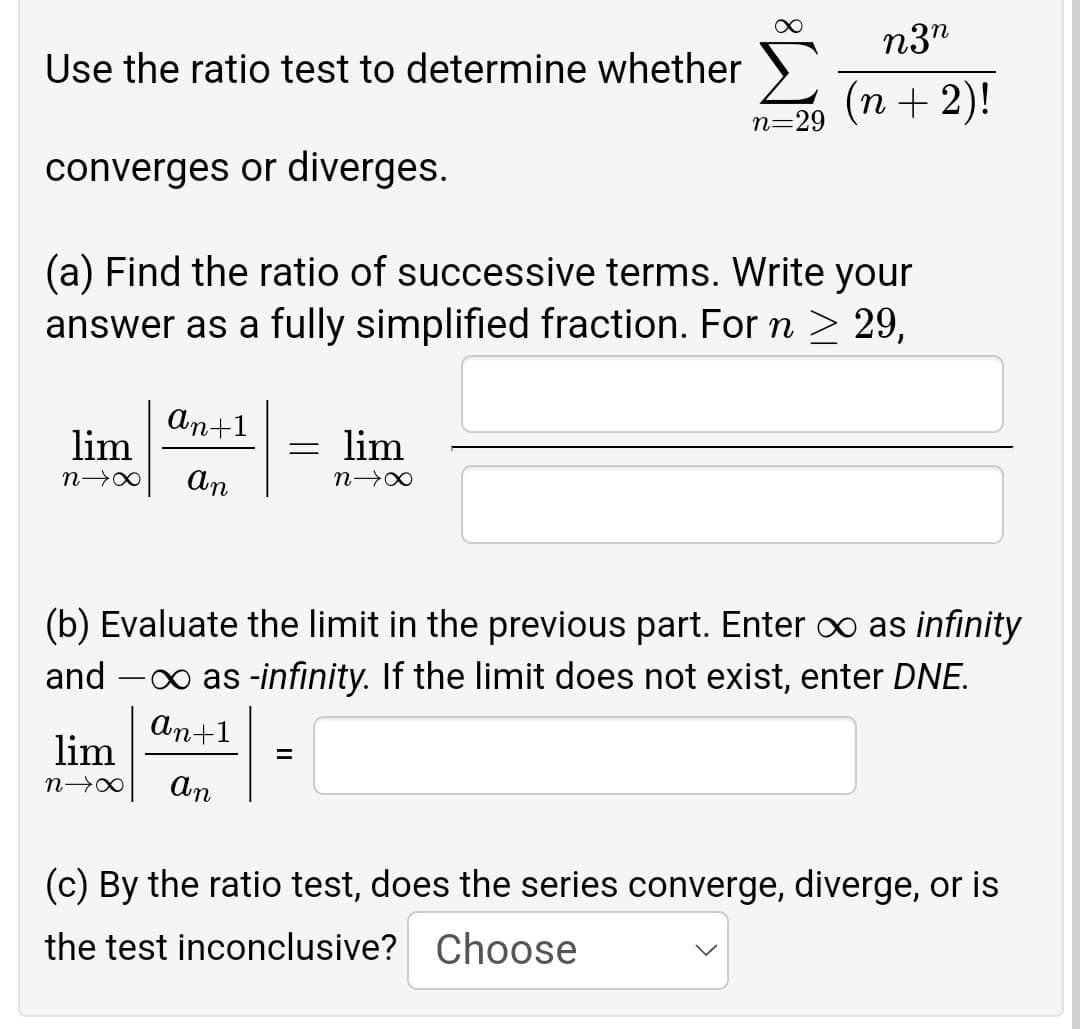Use the ratio test to determine whether n3n (n + 2)! n=29 converges or diverges. (a) Find the ratio of successive terms. Write your answer as a fully simplified fraction. For n ≥ 29, an+1 = lim lim n→∞ an n→∞ (b) Evaluate the limit in the previous part. Enter ∞ as infinity and ∞ as -infinity. If the limit does not exist, enter DNE. an+1 lim = n→∞ An (c) By the ratio test, does the series converge, diverge, or is the test inconclusive? Choose
Use the ratio test to determine whether n3n (n + 2)! n=29 converges or diverges. (a) Find the ratio of successive terms. Write your answer as a fully simplified fraction. For n ≥ 29, an+1 = lim lim n→∞ an n→∞ (b) Evaluate the limit in the previous part. Enter ∞ as infinity and ∞ as -infinity. If the limit does not exist, enter DNE. an+1 lim = n→∞ An (c) By the ratio test, does the series converge, diverge, or is the test inconclusive? Choose
Algebra & Trigonometry with Analytic Geometry
13th Edition
ISBN:9781133382119
Author:Swokowski
Publisher:Swokowski
Chapter10: Sequences, Series, And Probability
Section10.1: Infinite Sequences And Summation Notation
Problem 76E
Related questions
Question

Transcribed Image Text:∞
n3n
Use the ratio test to determine whether
(n + 2)!
n=29
converges or diverges.
(a) Find the ratio of successive terms. Write your
answer as a fully simplified fraction. For n ≥ 29,
an+1
= lim
lim
N→∞ An
N→∞
(b) Evaluate the limit in the previous part. Enter ∞ as infinity
and - as -infinity. If the limit does not exist, enter DNE.
an+1
lim
=
n→∞
an
(c) By the ratio test, does the series converge, diverge, or is
the test inconclusive? Choose
Expert Solution
This question has been solved!
Explore an expertly crafted, step-by-step solution for a thorough understanding of key concepts.
This is a popular solution!
Trending now
This is a popular solution!
Step by step
Solved in 3 steps with 3 images

Recommended textbooks for you

Algebra & Trigonometry with Analytic Geometry
Algebra
ISBN:
9781133382119
Author:
Swokowski
Publisher:
Cengage

Algebra & Trigonometry with Analytic Geometry
Algebra
ISBN:
9781133382119
Author:
Swokowski
Publisher:
Cengage